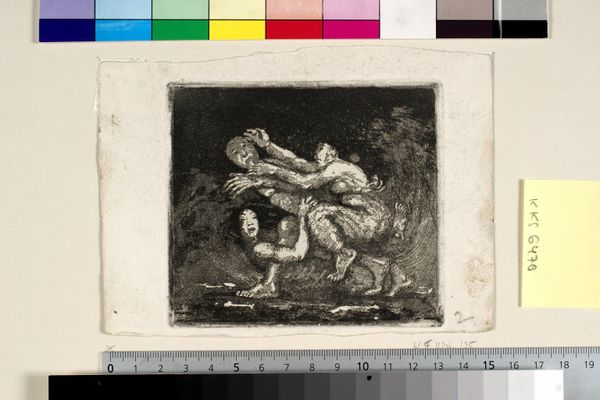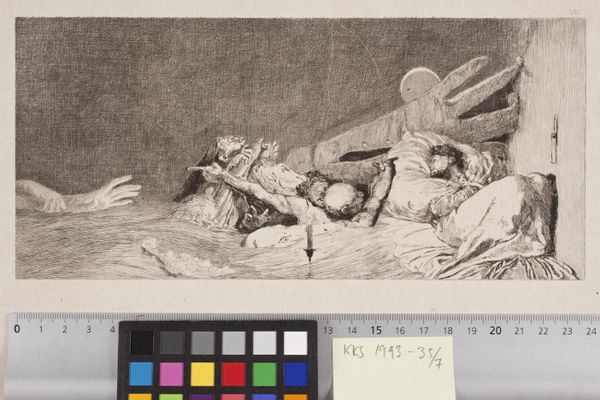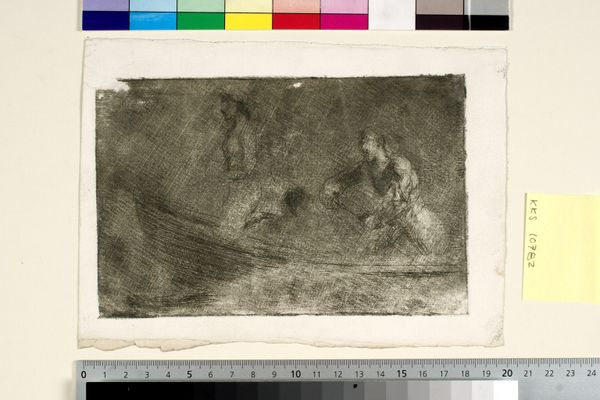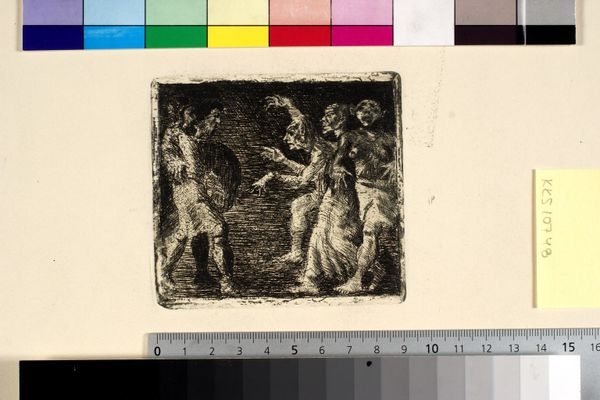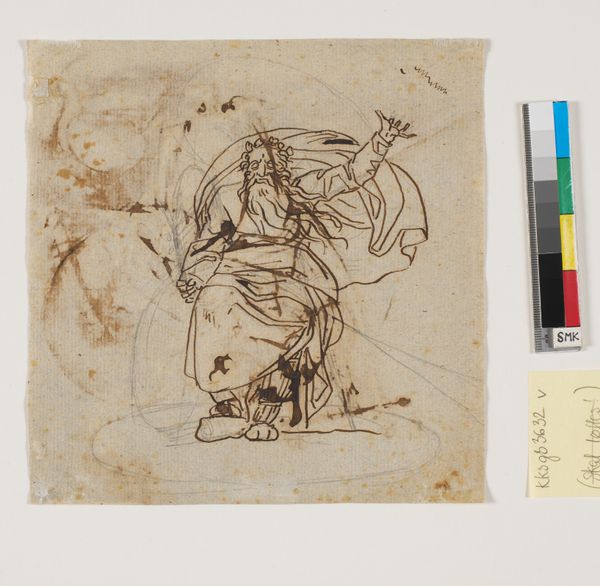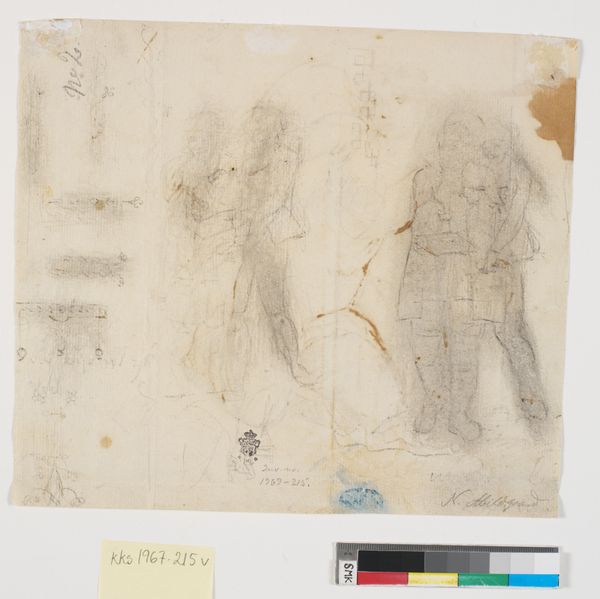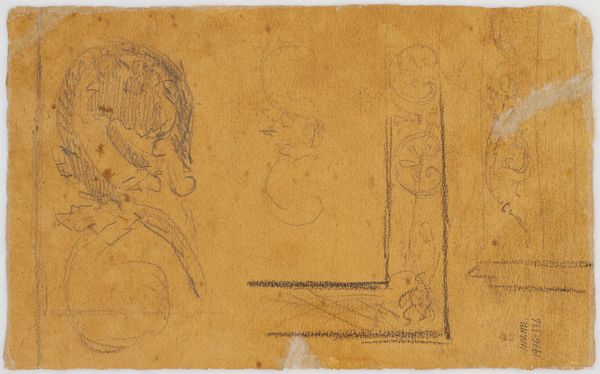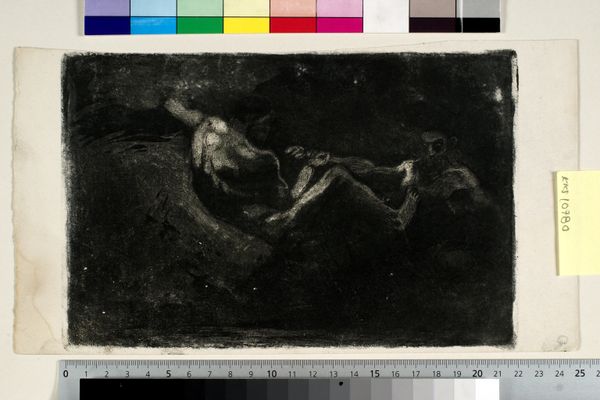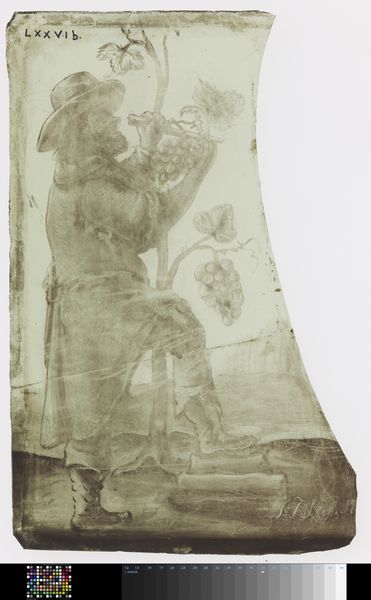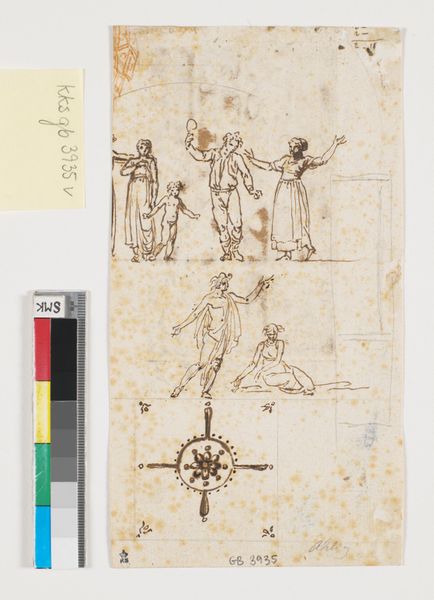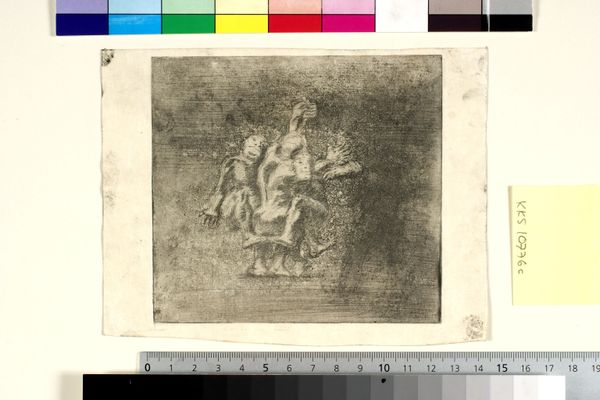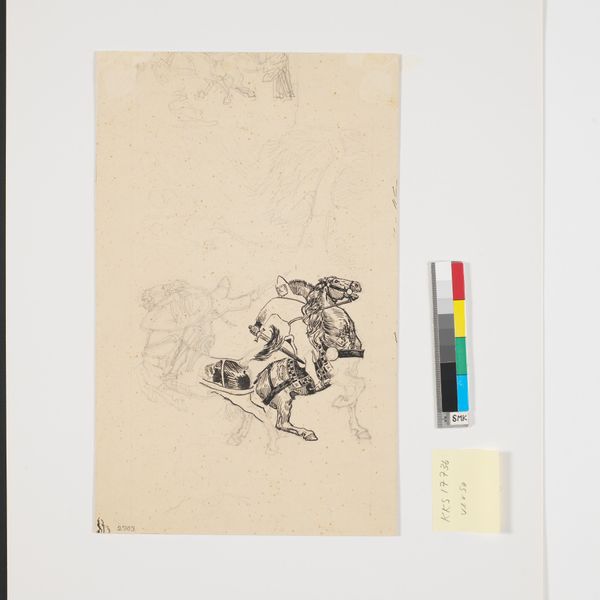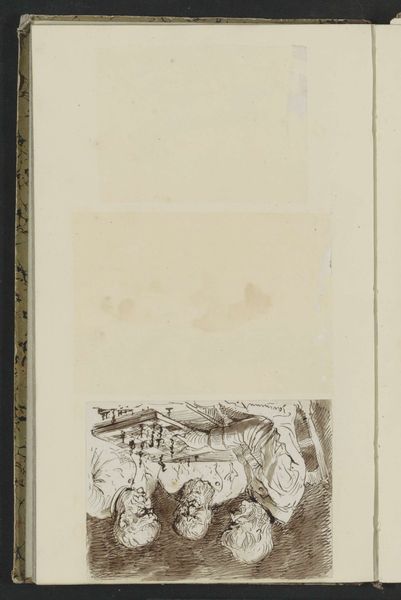
drawing, print, etching, paper, ink
#
drawing
#
art-nouveau
# print
#
etching
#
figuration
#
paper
#
ink
#
genre-painting
#
mixed media
Dimensions: 180 mm (height) x 114 mm (width) (plademaal)
Curator: This etching, titled "Karnevalsscene," was created by Oluf Hartmann in 1902. It resides here at the SMK, Statens Museum for Kunst. It is executed with ink on paper using printmaking techniques, an intriguing example of Art Nouveau's foray into genre painting. Editor: It’s captivating, possessing an air of almost clandestine revelry. The stark lines and shadowy figures lend a somber tone to what I would typically associate with jovial festivities. The texture looks layered and tactile. Curator: Precisely, it disrupts simple readings. Considering the socio-political climate of early 20th century Europe— the rising anxieties surrounding class, shifting gender roles, and burgeoning artistic movements—one could read this scene as a subversive commentary on societal constraints masked as celebration. These carnival goers are acting out certain desires under the safe harbor of the "festive". Editor: Yes, and notice the etching technique, it involves physically impressing an image onto a surface to mass-produce an image, to commentate in a democratic manner that even further broadens the message to include lower social tiers, an overt access to imagery. Curator: Absolutely, and the choice of medium reinforces the message. The contrast of dark inks pressed into the paper enhances the dramatic narrative. It also raises the questions surrounding the nature of spectatorship. Who is participating in this event, and more importantly, who is the artwork designed to include in its critique of society's rules? Editor: It seems Hartmann uses the inherent properties of etching - its reproducibility, its accessibility, and its textured surface to amplify the complex interactions of labor, materials, and consumption that influence perceptions of social events and status. Also, look at how the material is aged now - do you think Hartmann expected to convey these undertones later as well? Curator: That’s a profound point. Time’s passage is itself a material that alters readings. Thinking of how these characters act out gender, class, and status. If Hartmann wished to point the issues from those moments, how could these roles become even more significant after so much time, becoming ghosts that point out our historical evolution? Editor: By shifting our focus from aesthetics to the raw processes and materials of creation, we unveil how intertwined art remains with the historical forces shaping not just our culture, but also society's means and mode of producing art itself. Curator: A truly illuminating intersection of art and culture as captured through the carnival's mirror.
Comments
No comments
Be the first to comment and join the conversation on the ultimate creative platform.
